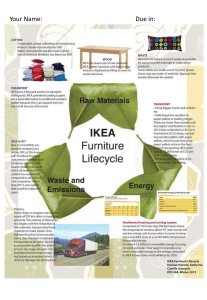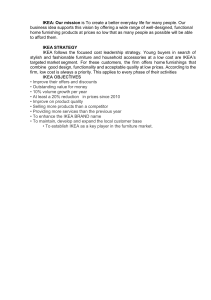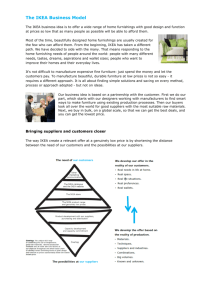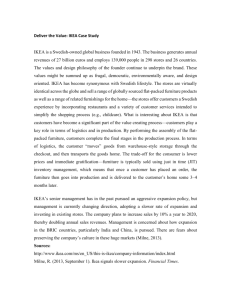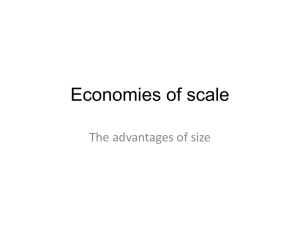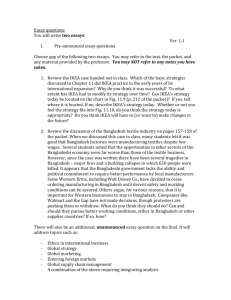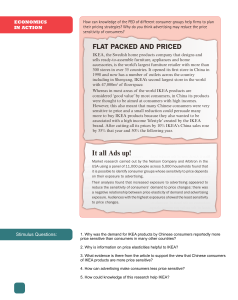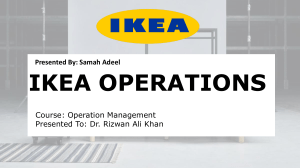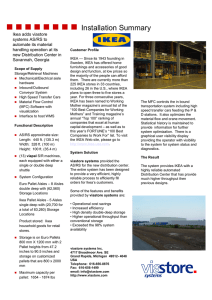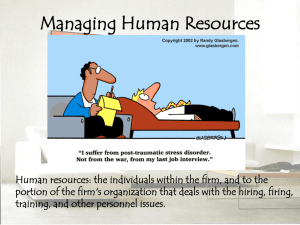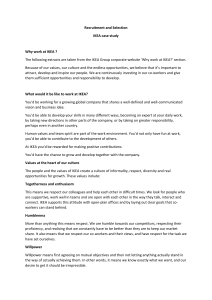What is a Business
advertisement
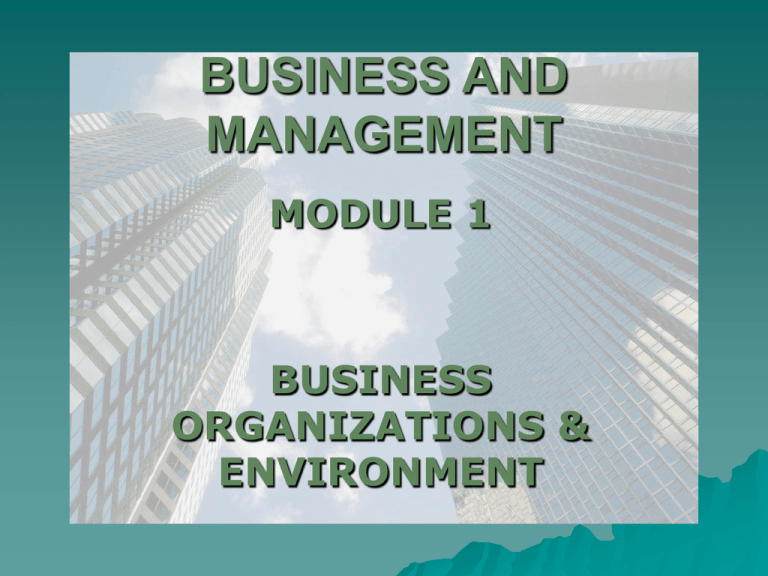
BUSINESS AND MANAGEMENT MODULE 1 BUSINESS ORGANIZATIONS & ENVIRONMENT Introduction If you walk down any street, you will notice that many of the shops display their names for all to see. It may be Murphy’s the fish seller; Brown, Macy and Brown lawyers; as well as known chain stores such as Shopper’s Drug Mart or the GAP. All are businesses, but each with a different status in terms of how is operated, who the owner is and how any profit is shared. The IKEA Group Facts & Figures The IKEA story began in 1943 in the small village of Agunnaryd in Sweden, when founder Ingvar Kamprad was just 17. Since then, the IKEA Group has grown into a major retail experience with 123,000 co-workers in 25 countries/territories generating annual sales of more than 21.5 billion euros. Top five sales countries Germany 16%, USA 11%, France 10%, UK 7% and Italy 7%. The IKEA Group (continued) IKEA manufactured and supplies a wide range of furniture and household goods. Based in Sweden, it sells many of its products in boxes, which are then assembled by the consumer. Purchasing per Region 3% 30% Australia & Asia Europe North America 67% Suggest examples of the factors of production that IKEA may be using Using IKEA’s products as an example, distinguish between consumer goods and capital goods Sales per Region 15% 5% Australia & Asia Europe North America 80% What is a Business? A decision-making enterprise that uses inputs to produce an output – a good or service Inputs are often referred to as Factors of Production Outputs can be tangible (physical substance) or intangible (a service or degree of satisfaction) Business Resources Factor’s of production – Land Where business premises may be located; natural resources used by business; rental units etc – Labour Workforce of business; including salaries and hourly paid workers – Capital Money, equipment and machinery used by the business – Enterprise The business sense (idea) of the entrepreneur (owner); organization, hiring, investment etc Financial Returns For their part in the production process, the factors or production have some financial returns Hence, the more factors there are, the more returns there are likely to be – Land can result in a return called rent – Capital often generates interest – Labour results in wages for employees – Entrepreneurs receive a profit for their risk-taking in the production process The Purpose of a Business Businesses exist to satisfy the needs and wants of people, organizations, and governments Muffin Tops Needs are the basic necessities that a person must have Wants are the desires that people have The Marketplace The market is simply a place or process whereby buyers (customers or consumers) and sellers (businesses) meet to trade – Physical shop, restaurant etc A market can exist in a non-physical form, such as the Internet or telephone Types of Products Consumer Goods – Sold to the general public, rather that to other businesses – Can be further classified as durable goods (last a long time and are used repeatedly) or nondurable goods (expire in a short time) Capital Goods – Purchased by other businesses and are used to produce other goods Services – Intangible products Adding Value All businesses must add value in the production process Valued added is the difference between the value of inputs and the value of outputs – Inputs Costs of production – Outputs The goods and services sold to customers Profit Determination By adding value, businesses are able to sell products for more than its production costs – Thereby earning a profit Customers are willing to pay prices in excess of the costs of production for several reasons: – – – – – – Speed or quality of service/craftsmanship Prestige of ownership Feel good factor Perceived value for money Brand image/loyalty Lack of competition The Role of Profit Provides incentive to produce A reward for risk-takers Encourages innovation and invention Acts as a indicator of growth Used as a source of finance All businesses must make a profit to survive in the long run Opportunity Cost Businesses have to make decisions that affect their daily operations an long term plans Opportunity cost is defined as the best alternative that is foregone when making a business decision – Chinese Restaurant Businesses are confronted by decisionmaking opportunities all the time Assumption must be made that all decisions will result in the most benefit Opportunity Cost Discussion Sunday shopping in Ontario has been around since the early 1990’s. Stores in Ontario were fined if they opened on Sundays, but the fines were so insignificant, that stores continued to stay open. McDonalds is one of the few restaurant chains in the world that remain open 24 hours a day, seven days a week. Several banks in Kingston are now open on Sundays. Define opportunity cost and examine the reasons why opportunity cost is an important concept in business decision-making.

